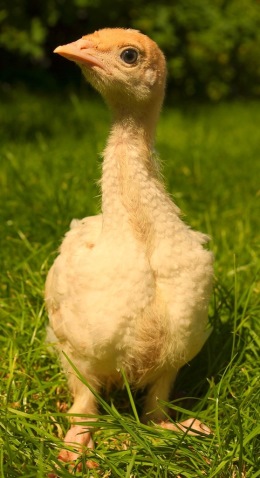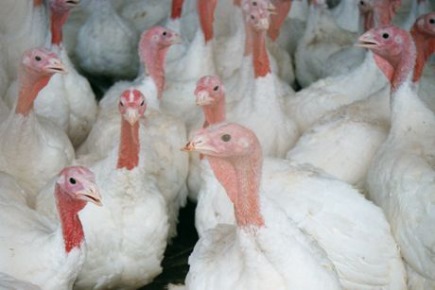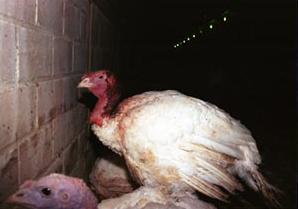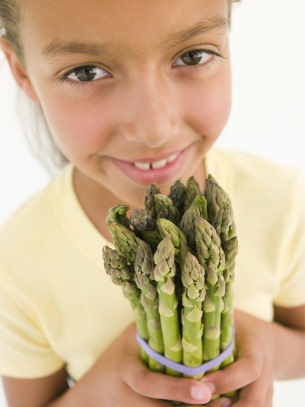Where do baby turkeys come from? Brace yourself (Opinion)
by Kalypso Arhilohou ~
Mommy, Daddy, where do baby turkeys come from?
Let’s hope little Suzie never asks you that question. As if it’s not tricky enough getting across how human babies are made, in this case you’d really have some ‘splaining to do.
The turkey you might be eating on Thanksgiving, a day when Americans polish off about 50 million individuals of that species, most likely came to exist in a rather surprising way.
Chances are that the ex-bird on your plate was the offspring of a mom and a dad who never met. Not to say that your turkey’s parents didn’t have sex. They did, in a way, but, well… not with each other, or with any other turkey.
Then who could the paramour be? you ask in innocence.
Sorry to break it to you. Your turkey’s reproductive deed was done with people. Or more accurately, by people. As in human people. And it’s probably safe to say that it wasn’t your turkey’s idea.
Enough, you plead. This is getting gross.
But wait, there’s more.
Can’t fly, walk, or…
Commercially-produced turkeys are bred for size and meat quality, rendering them too large and awkward to mate the old-fashioned way.
In fact, unlike their wild ancestors who zoomed through the skies at 50 miles an hour and trotted at 20 mph, the “designer” hybrids of today can’t fly, can’t walk properly, and often suffer from orthopedic problems.
Hanky panky? Forget it. No can do.
So how do U.S. turkey producers manage to create 248 million birds per year?
Warning: You are about to lose your innocence. Actually, we won’t be the ones to take your feast day virginity. We’ll leave it to the Merck Manual and to an agriculture professor, as follows.
But first, do brace yourself. We’ll be talkin’ stroking, massaging, organs, creamy white substances, and threesomes. Aha! Now we got your interest.
Coordination comes in handy, so to speak
“Collecting semen from a [male] chicken or turkey is done by stimulating the copulatory organ to protrude by massaging the abdomen and the back over the testes. This is followed quickly by pushing the tail forward with one hand and, at the same time, using the thumb and forefinger of the same hand to “milk” semen from the ducts of this organ.
[Geez, this takes coordination!]
“For insemination [of a female], pressure is applied to the left side of the abdomen around the vent. This causes the cloaca to evert and the oviduct to protrude so that a syringe or plastic straw can be inserted ∼1 in. (2.5 cm) into the oviduct and the appropriate amount of semen delivered.
“As the semen is expelled by the inseminator, pressure around the vent is released, which assists the hen in retaining sperm in the vagina or oviduct.”
[Yes, of course it's all about "assisting" the hen. Nonetheless we think we'll pass on a straw next time we order a drink.]
‘Holds the hen’s head between his knees’
The following instructions for man-made turkey matrimony come from a Professor Clark, dating all the way back to the 1950s. His title at the West Virginia Agricultural Experiment Station was awfully appropriate, by the way: Professor T. B. Clark, Associate Poultry Husbandman.”
[We kid you not.]
“Two operators working together are necessary for both collecting semen and inseminating hens.”
[See? A threesome. Either that or gang rape, depending on your point of view. Don't say we didn't warn you.]
“There are several methods for holding the toms. Whichever is used, the tom must not be frightened because this leads to tension and the tom cannot be stimulated.”
[A little candlelight to set the mood? Barry White on the boom box? Glass of wine? No, perhaps not.]
“One operator sits on a chair and the tom is placed across his knees.”
[Now how could that possibly cause tension?]
“The other operator holds the two legs loosely in one hand and the whiskey “jigger” or glass vial in the other.
[Ah, we knew alcohol would be involved somehow.]
“The first operator strokes the saddle feathers in front of the tail with the left hand, and massages the soft part of the abdomen under the vent with thumb and fingers of the right hand.
[The right hand, every guy's best friend.]
“When the tom responds by protruding the sex organs, the operator holds the tail back with his left hand and also uses this hand to ‘milk’ semen from the organ.”
[How is it even possible to do so many things with one hand? Or even with two hands? Oh well, practice must make perfect.]
“The semen is thick and creamy white. The glass receptacle is kept handy by the second operator and he can catch the semen, or the first operator can take the glass and hold it under the protruded organ.
[Teamwork!]
“If feces contaminate the semen, it should be discarded.”
[We so wanted to know that.]
“Inseminating the hens is easier than ‘milking’ the toms… One operator in a kneeling or sitting position holds the hen’s head between his knees.”
[No tension at all for her, we're sure.]
“Pressure is exerted on the abdomen with the right hand to expose the opening and force the oviduct out. The oviduct is to the left of the cloaca.”
[Modesty would be no asset to the modern working hen.]
“The left hand is used to force the tail back. The second operator fills the syringe with the proper quantity of semen and inserts it at least 1 inch into the oviduct. The pressure on the abdomen is released and then the plunger is pushed to deliver 0.025 to 0.05 cc semen.”
[In general, "force" and "plunger" are not words a lady likes to hear in the vicinity of her cloaca.]
“The oviduct can be everted with little difficulty if the hen is in full laying condition, but even if she is not in full lay, it can still be forced out but with considerable pressure.”
[Here we go again with the forcing.]
Perverts or producers?
If Dr. Clark or anyone else were to be caught performing such acts upon birds or other animals outside of the “animal husbandry” context—in other words if they were caught getting their freak on with critters in Biblical ways amid the privacy of their backyards or barnyards—they would be considered perverts, kept away from children, and perhaps prosecuted in most states.
Instead, farmed animal producers are perfectly safe. Seems it’s A-okay to force-masturbate boy animals and force-enter girl animals, as long as you do it in the right setting. Oh, and as long as you plan on eating them later. Or as long as you plan on selling them to someone else who will eat them.
Jollies
It’s hard to imagine that many of the low-wage workers who engage in this particular form of animal husbandry would get much gratification from it. Sounds like a nasty job.
Factor in, though, the total amount of money the U.S. farming industry rakes in off turkeys annually—$4.37 billion. With that in mind, you can probably assume that even if the birds aren’t having too great a time during such unnatural encounters with humans, and even if the menial laborers don’t enjoy the chore of making the guy birds ejaculate and making the gal birds bend over, open up, and take it, somebody nevertheless must be getting their jollies, sexual or not, all the way to the bank.
Try explaining that to little Suzie, especially with a drumstick in your hand.
Kalypso Arhilohou’s passions are animals, travel, and writing. She spends much of her time scheming on how to combine the three.
More AIR from Kalypso Arhilohou:
The yoke’s on you, Bill and Lou – or is it? A letter to two oxen slated for slaughter (Opinion)
Do you have an opposing view to this opinion piece? Polite and well-written responses are welcome and might be published, at the discretion of AIR editors. Please contact airinfo@yahoo.com for submission guidelines.
Get fresh AIR! Hit the ‘Follow’ button above to be notified via email of new articles.
Please respect copyright law. Sharing AIR links really helps! But copying more than a couple of paragraphs of content without permission is a no-no. If you’d like to use one of AIR’s articles or one of our photographs, kindly contact us at [airinfo AT yahoo DOT com].
Copyright © 2013 Animal Issues Reporter and AnimalIssuesReporter.com.
All rights reserved.




Leave a Reply